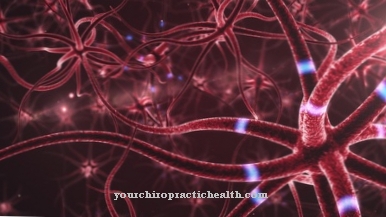The term Lysis generally indicates a resolution that can relate to different facts. Even within medicine, this term has different meanings. In medicine, for example, lysis is short for thrombolysis, which is used as a drug therapy to dissolve thrombus in heart attacks or pulmonary embolisms.
What is the lysis?

In addition to the dissolution of dead cells or the dissolution of blood clots in the event of a thrombosis, lysis is also a term for the gradual resolution of a disease.
For the thrombolysis of blood clots in heart attacks, strokes or pulmonary embolism, the term lysis is used as a short form of therapy. The resolution of pathological fears is called, for example, anxiolysis. On the other hand, hemolysis characterizes both a physiological and a pathological dissolution of the red blood cells.
In chemistry, the syllable 'lysis' characterizes the dissolution of certain compounds by active agents. In what is known as ozonolysis, for example, carbon-carbon double bonds are destroyed by the action of ozone. During hydrolysis, water molecules break down, and during electrolysis, electric current breaks down certain chemical compounds.
Function & task
Lysis plays a major role in biology and medicine. It is of great importance in the necrosis or apoptosis of body cells. In both cases, body cells die. While pathological processes are the cause of death in necrosis, apoptosis is about a targeted suicide program of the cells to make room for new body cells. During the subsequent lysis, the cell components are completely dissolved by enzymes. This process is vital as it protects the body from poisoning and infection.
Another lysis process is triggered by the T cells of the immune system. The T lymphocytes ensure that infected cells or tumor cells are dissolved. Since degenerate cells are constantly forming or cells are constantly being infected with viruses or parasites, the lysis triggered by T lymphocytes takes place continuously.
The organs and tissues are also constantly being remodeled. So old cells continue to die while new cells are formed. In some organs these processes are very intensive, in others less intensive. The bone and skeletal system is in constant transformation.
The stress on the bones causes permanent structural defects, which are repeatedly corrected by breaking down the bones (osteolysis) and rebuilding.
The blood cells are also renewed within 120 days. The breakdown of red blood cells is called hemolysis. In order to ensure the renewal of the blood, a constant physiological hemolysis takes place.
In thrombolysis, blood clots are dissolved using medication to prevent or treat heart attacks, strokes, or embolisms. In biological research, the breaking up of cells by ultrasound or chemical processes in order to be able to examine their proteins or their DNA is also known as lysis.
Illnesses & ailments
When cells of the body are infected with viruses, after a few replication cycles, during which new viruses are generated, the cell is destroyed without any subsequent dissolution of the cell components. This enables the viruses to spread further in the body. In this case, the lack of the lysis process leads to the spread of the infection. Only the targeted destruction and dissolution of the infected cells by T lymphocytes, which are increasingly formed in the course of the infection, stops the virus from spreading and initiates the healing process.
However, if the balance between the breakdown and rebuilding of body cells is disturbed, pathological processes occur. Osteolysis and hemolysis are usually normal processes that ensure the renewal of the skeletal system or blood. However, if the breakdown processes predominate, serious illnesses can occur.
Increased osteolysis leads, among other things, to osteoporosis (bone breakdown) or osteomalacia (mineral deficiency in the bones). The result is a high level of bone fragility. An increased breakdown of blood cells is known as increased hemolysis and leads to anemia. Bilirubin is formed as a breakdown product of hemoglobin. Bilirubin is yellow in color and causes the typical symptoms of jaundice. While the red blood cells are broken down after 120 days in physiological hemolysis, the lifespan of the erythrocytes is reduced with increased hemolysis. The severity of the anemia therefore depends on the lifespan of the red blood cells.
The causes of the increased hemolysis can be vascular changes, heart valve prostheses, genetic blood diseases (e.g. sickle cell anemia), infections (e.g. malaria), immunological disorders, toxins (e.g. due to streptococci) or blood cancer.
All other organs are also affected by the physiological cell breakdown and cell dissolution. The construction and dismantling processes are normally in balance with one another. However, if the breakdown processes predominate, the organ concerned becomes ill.
With increasing age, the formation of new cells slows down without the breakdown processes being delayed. This results in a gradual breakdown of the body cells and their dissolution.
The digestive process is also part of the lysis process. The digestive enzymes of the pancreas are responsible for the digestion. If the digestive juices are activated before they are released from the pancreas, or if their release is disturbed, the pancreas can completely self-dissolve (digestion) in the course of acute pancreatitis.

























.jpg)

.jpg)
